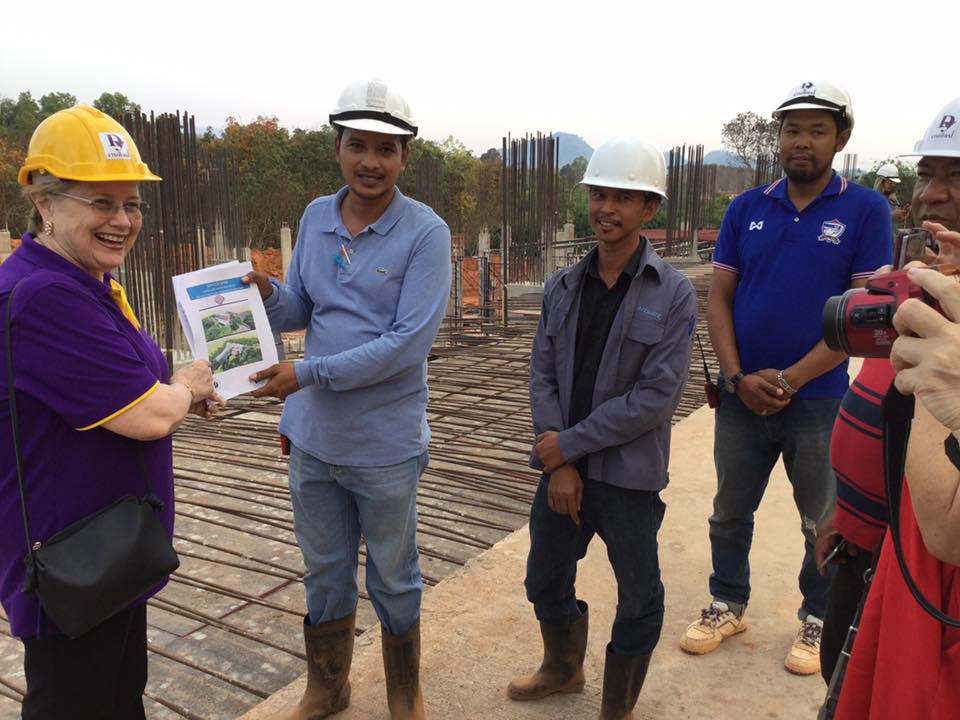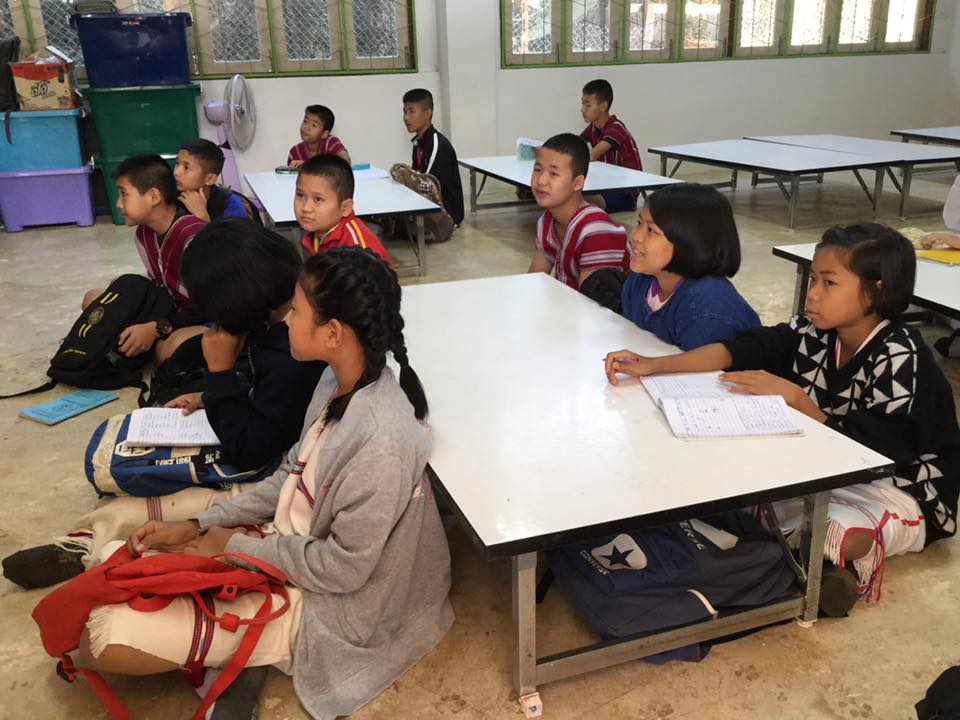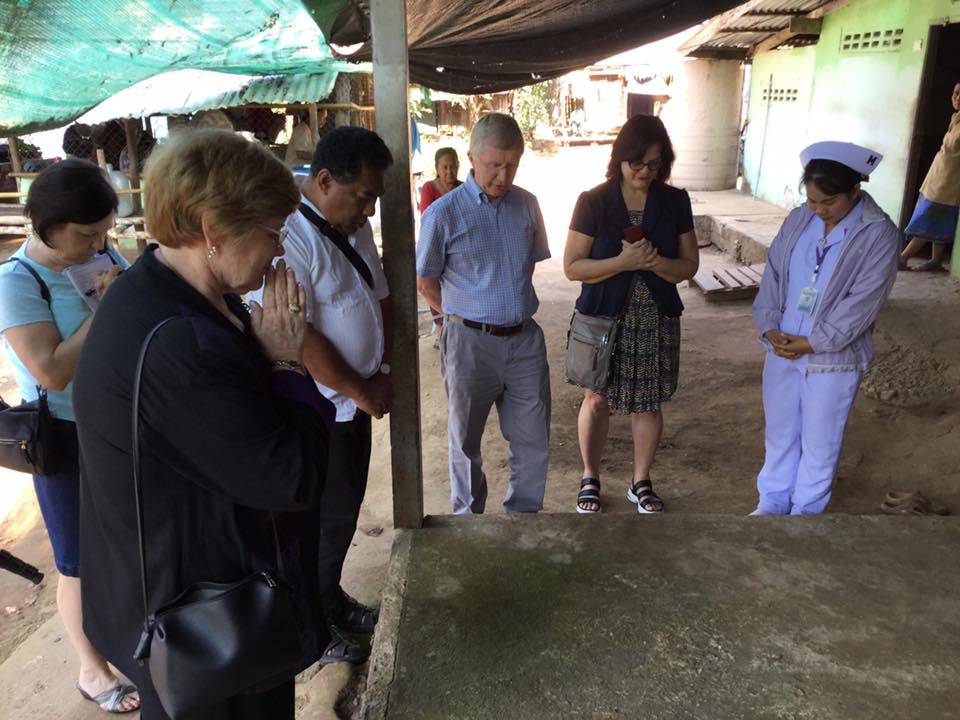A Letter from Hery Ramambasoa, Regional Liaison for Southeast Asia and the Pacific, based in Fiji
June 2019
Write to Hery Ramambasoa
Individuals: Give online to E200493 for Hery Ramambasoa’s sending and support
Congregations: Give to D507595 for Hery Ramambasoa’s sending and support
Churches are asked to send donations through your congregation’s normal receiving site (this is usually your presbytery)
My family has been growing rice in Madagascar for generations. Our farm is not far from the city, so when we were kids, we spent our weekends and most of our school holidays in the fields. As a boy, I loved soaking my bare feet in the cool, sticky mud while my head was burning in the sun. I enjoyed watching new sprouts shooting up out of the paddy fields, turning greener and becoming taller as the weeks went by. When I moved to serve in Southeast Asia and the Pacific, I was pleasantly surprised to recognize a similar atmosphere to that of my childhood in these faraway lands. The luxuriance of the mango trees during the monsoon season, the thud of oxen in the meadows and the furtive smile of toddlers make me feel homeward bound. When the inhabitants talk about their special connection to the land, I can identify with these values, for they are very close to those of my people. The greatest wealth lies in relationships within the family, the village and the community at large. The land here is not merely a means of production: it connects generations to ancestors. It is the source of life and the place where one will be buried.
PERIL IN THE HOUSE
Past this stage of wonder and familiarity, I have been slowly confronting the issues that are important to the inhabitants. How would you respond to teenaged girls from Kiribati saying bitterly that they don’t want to have children because there is no future in their island due to rising sea levels? Since I arrived, not a week has gone by that I haven’t heard of a natural disaster: an earthquake, a typhoon, a flash flood or a severe drought. In September 2018, Typhoon Mangkhut hit several countries in the region. In the Philippines, it came with winds of up to 155 miles per hour and affected almost 4 million people. Over one million people were displaced to thousands of evacuation centers. Recovery activities are still underway. On September 27, a series of earthquakes followed by a tsunami hit Central Sulawesi in Indonesia. Two thousand one hundred people were confirmed dead; 1,300 are missing; 133,000 were displaced to other districts; and thousands have left the region to stay with family members. In January 2017, the south of Thailand was hit by severe floods that affected 1.8 million people. In Bangkok, a major canal flooded after three hours of rain. Yet, this year, many regions of Thailand are struck by droughts. Extreme weather has tripled globally, and the number of populations living in disaster-prone areas has doubled.
In contrast to this devastation, Southeast Asia is known for its fast-growing economy. Representing a population of 647.50 million, the Association of Southeast Asian Nations (ASEAN) is the sixth largest economy in the world. The “Blue Pacific” region, which combines thousands of islands scattered over an area equivalent to 15% of the surface of the globe, is the most vulnerable to the effects of climate change and natural disasters. The world’s economic powers are eyeing this region to expand their empire. The region continues to attract investment, which, when paired with technology and high productivity of goods, leads to economic growth. Unfortunately, this economic growth has not been inclusive; increased wealth is concentrated among those who are already rich. Prosperity for the few hinders access to education, health care and disaster risk management, thus correlating with daunting human rights abuses and creeping poverty over generations.
Six months or one year after the trauma of a typhoon, the reality is blatant. Widows need to pluck up their courage to start from scratch. Farmers are reluctant to move to another region. What percentage of displaced people have succeeded in building a new life? Many end up with poor-paying jobs and sometimes must resort to petty crimes to survive. It is the poor who suffer the most — escaping from poverty is almost impossible.
WHAT CAN BE DONE?We generally feel overwhelmed and wonder how to contribute as disasters continue to explode all over the world. How can we spare time and resources to assist others when we are affected at home? The good news is that our partner churches and organizations are already at work. We rely first on their expertise on how, when and where to intervene in accordance with local authorities and consortia of aid organizations. Our partners receive first-hand information on the ground and channel the assistance accordingly. Some of our church partners have social, development and relief departments in charge of collecting the news from affected areas. That is why it is very important to continue to donate to organizations like Presbyterian Disaster Assistance (PDA); they are our hands and feet as they collaborate efficiently in these hotspots. Striving to offer timely relief and long-term solutions, they often collaborate with similar organizations gathered within the ACT Alliance, “a coalition of 152 churches and church-related organizations working together in over 125 countries to create positive and sustainable change in the lives of the poor and marginalized.” PDA has been a partner in the Philippines and in Indonesia for several years now.
ALONGSIDE OUR MISSION CO-WORKERS
Our mission co-workers in the region are posted in strategic areas where they can efficiently spread news about the situations in the countries in which they serve. Most importantly, our colleagues are working with those who are particularly vulnerable to extreme poverty. Whether mission co-workers are in social work, education, research, interfaith dialogue or street theater, they are afforded insider views that are not always developed in the international news.
As a regional liaison, my role is to highlight the moans and joys of belonging to a worldwide family as it is experienced among the partner churches in the region. Today, the internet allows us to interact instantly when we hear of a cry for help from our immediate family. In terms of disaster relief and climate change, we must go beyond awareness of the latest news to become among those who help bring significant change. By being physically present in the region and working with partners to alleviate systemic poverty, I express solidarity with the Presbyterian Mission Agency in its commitment to becoming a Matthew 25 Church. I live and work with our partners and share their stories.
GIVE OUR PLANET A CHANCE
When we study the roots of climate change, we find how human activities have affected the balance. It is not merely a matter of economics and environment. It is a result of how we as individuals, communities and nations relate to each other. When in Galatians 6:2 Paul urges us to “bear each other’s burdens” in order “to fulfill the law of Christ,” he encourages us to admit that like our fellow believer who failed, we too could fail. Therefore, we should be humble and test ourselves to determine if we are being faithful to God. In our stewardship of God’s creation, it is easy to point out our neighbors’ transgressions. But what have we done to reverse the existing trends? As the heads of states in the Pacific asserted in their last forum, “Sea level rise in Tuvalu is sea level rise in New York, though one might go under before the other.” Let’s act responsibly in our households, in our communities and in our nations. These are the burdens we should carry.
Thank you for subscribing to my letters. Please support me in prayers and by donating to this ministry. In doing so, you are building a sense of family between you and the people of Southeast Asia and the Pacific.
Hery Ramambasoa
![]() You may freely reuse and distribute this article in its entirety for non-commercial purposes in any medium. Please include author attribution, photography credits, and a link to the original article. This work is licensed under a Creative Commons Attribution-NonCommercial-NoDeratives 4.0 International License.
You may freely reuse and distribute this article in its entirety for non-commercial purposes in any medium. Please include author attribution, photography credits, and a link to the original article. This work is licensed under a Creative Commons Attribution-NonCommercial-NoDeratives 4.0 International License.



